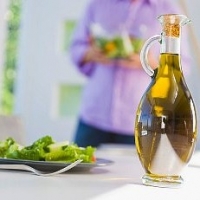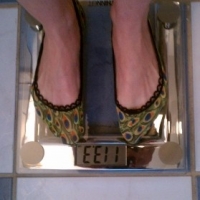Healthy Food Vs ‘health’ Food For Weight Loss
The diet and weight loss industry is big business. Every year, a fortune is spent on promoting and spinning newly discovered weight loss methods to a legion of attentive and gullible consumers. In the last ten years, the ‘health’ food division has absolutely exploded and it has seen the arrival of various weight loss bars, shakes, lean frozen foods and the like. What these specialty foods don’t tell you is that they are actually completely overpriced, ineffective, and unnecessary in your efforts to achieve real weight loss success. Let’s look at the important distinction between quality healthy food and the various types of ‘health’ food that keep popping up in the supermarket.
When we talk about supposed ‘health’ foods, we’re talking about those foods that make outlandish claims like ‘99% fat free.’ This should be the first red flag waving in your mind from now on, as anything that makes that sort of claim deserves a deeper inspection. I’ll explain… In many countries, the caloric content of a serving and the calories from fat are printed on the nutritional information of the food package; it’s the second value that everyone trying to lose weight should pay attention to. The calculation every consumer should be making from now on is this: divide the value of the calories from fat by the total caloric value of the serving to find the REAL fat percentage of what you will be eating. Then, multiply that percentage by the serving size of the food to know the real fat content.
Here’s an example: take a 36 g granola bar, a ‘health’ food if there ever was one. Per serving, this bar has 130 calories, 45 of which are from fat. We divide 45 calories by the total of 130 calories per serving to get a fat percentage of about 35%, then we multiply that percentage by the serving size (36 g) and learn that there are actually 12.6 g of fat per bar –over twice the amount listed on the box (5g). To be fair, this bar is not claiming to be low in fat, but you get the idea of how nutrition information can be misleading, don’t you?
The unfortunate reality is that most people aren’t aware of these sneaky technicalities in the nutrition information on the packages of the food they eat. Many people think they are doing all the right things but fail to succeed simply because they were working from misleading information. Healthy food is not as complicated as tricky calculations, not as expensive as flashy diet supplements and far more effective in both the long and short term. Remember to be conscious of the food you put into your body, make sure it’s real!
-
5 Ways Of Achieving Healthy Weight Loss Through Better Metabolism
One of the best and easiest ways of healthy weight loss is to lose wei
-
Stretching Can Supply You With Many Health Benefits
For individuals that are looking to become healthy you will find th
-
Drop 6 Lbs of Stubborn Fat Every Week - Highly Effective Diet to Melt Fat Easily & Permanently!
How would you like to drop 6 lbs. of stubborn fat every week without s
-
The Best Way To Reduce Belly Fat in a WEEK- See Which EFFECTIVE Diet Plan Works Best to Get a Flat Midsection Fast!
How would you like to reduce belly fat in a week plus get a slimmer wa
-
Every Other Day Diet Review - One Day Diet Wafers Diet Plan
The Every Other Day Diet by Jon Benson is a controversial weight loss
-
Hoodia Gordonii Diet Pills Scam – How To Avoid It
People around the world who are new to this product are sometimes obli
- DON'T MISS
- Lose Body Fat
- Do Away with Unwanted Fat with Weight Loss Pills
- Getting Rid of Your Excess Fats Safely
- Top brand diet pills --Super Slim Pomegranate,lose weight fast
- The Wonders of HCG Diet Protocol
- Simple Steps to Lose Your Belly Fat and Feel Great
- Lose Inches Off Your Waistline Fast - Proven Diet System to Get a Slimmer Waistline in 2 Weeks!
- Save money and time with wearable health technology
- Teenagers Weight Loss Secret To A Fast Weight Loss
- Diet Plans For Bodybuilders




